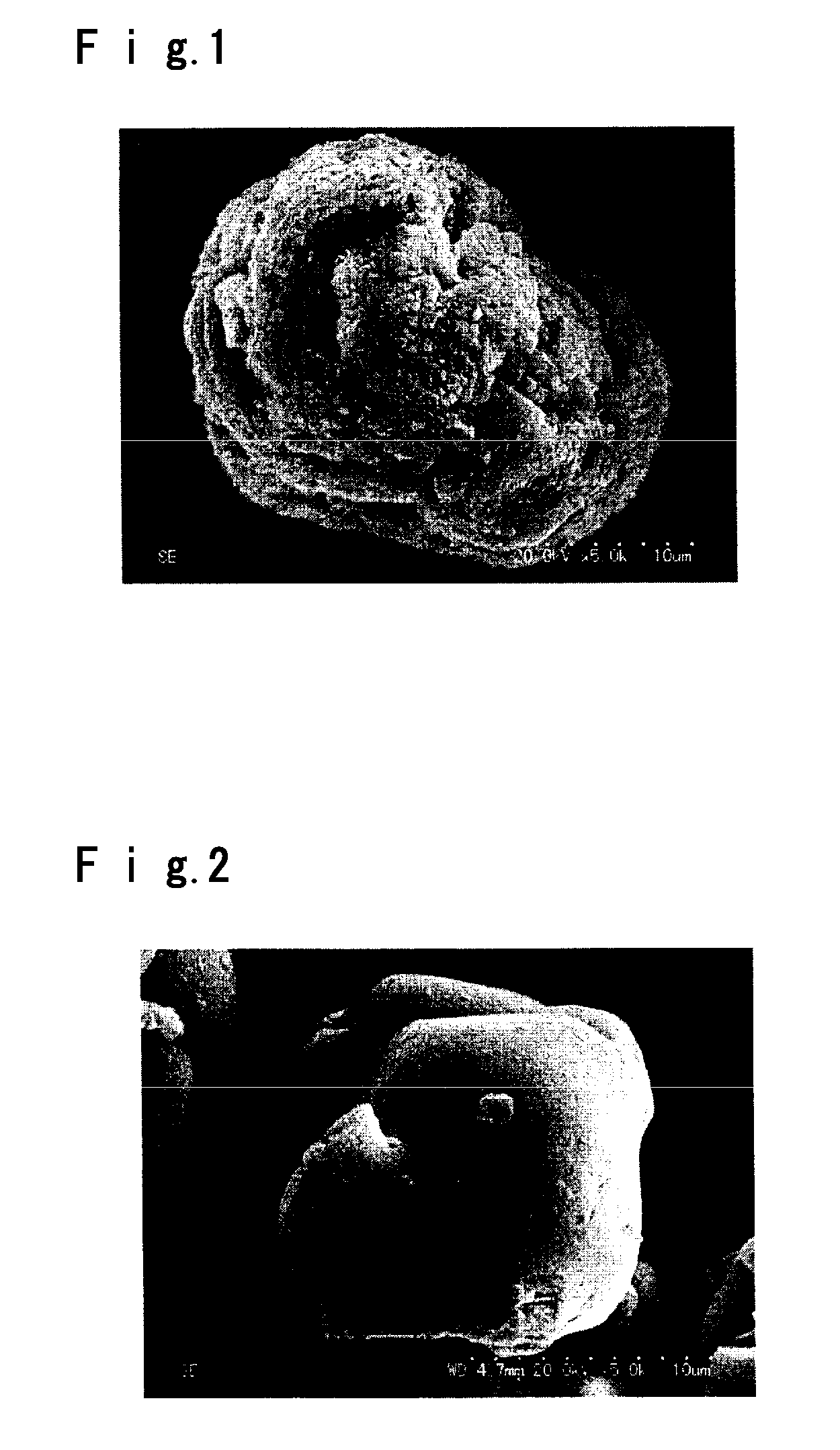Process for producing lithium-containing composite oxide for positive electrode for lithium secondary battery
a lithium secondary battery and composite oxide technology, applied in the direction of conductors, cell components, nickel compounds, etc., can solve problems such as gas generation, and achieve the effects of reducing gas generation, high average operation voltage, and high safety
- Summary
- Abstract
- Description
- Claims
- Application Information
AI Technical Summary
Benefits of technology
Problems solved by technology
Method used
Image
Examples
example 1
[0059] A mixed solution of a cobalt sulfate aqueous solution with ammonium hydroxide and a caustic soda aqueous solution were continuously mixed, whereby a cobalt hydroxide slurry was continuously prepared by a known method, followed by steps of agglomeration, filtration and drying to obtain a cobalt hydroxide powder. Powder X-ray diffraction analysis of the obtained cobalt hydroxide using CuKα rays showed that the half value width of the diffraction peak of (001) plane at 2θ=19±1° was 0.27°, and the half value width of the diffraction peak of (101) plane at 2θ=38°±1 was 0.23°. As a result of observation by scanning electron microscope, the particles were found to be ones having fine particles agglomerated to form substantially spherical secondary particles. As a result of particle size distribution analysis on the volume basis calculated from image analysis of observation by scanning electron microscope, the average particle size D50 was 13.3 μm, D10 was 6.5 μm and D90 was 18.0 μm....
example 2
[0069] 1.27 g of boric acid was mixed with a solution having 44.41 g of water dissolved in 4.32 g of citric acid monohydrate, and the mixture was stirred for 30 minutes to obtain an aqueous solution having a pH of 2.8. The aqueous solution was added to a lithium cobaltate powder to prepare a slurry.
[0070] The slurry was dehydrated in a dryer at 120° C. for 2 hours, followed by firing in the air at 500° C. for 12 hours to obtain LiCo0.99B0.01O2. The fired product was crushed to obtain a lithium-containing composite oxide powder formed by agglomeration of primary particles, and the particle size distribution of the powder was measured in water solvent by using a laser scattering type particle size distribution measuring apparatus. As a result, a substantially spherical lithium-containing composite oxide powder having an average particle size D50 of 13.4 μm, D10 of 6.5 μm and D90 of 18.8 μm, and a specific surface area of 0.28 m2 / g as measured by means of BET method, was obtained. Wit...
example 3
[0073] 0.71 g of boron oxide, 194.82 g of cobalt hydroxide and 76.22 g of lithium carbonate were mixed, whereby a lithium-containing oxide was prepared by blending to result in LiCo0.99B0.01O2 after firing. An agglomerated lithium-containing composite oxide powder having an average particle size D50 of 13.5 μm, D10 of 6.5 μm and D90 of 18.1 μm, and a specific surface area of 0.30 m2 / g as measured by means of BET method, was obtained. With respect to this powder, an X-ray diffraction spectrum was obtained by using an X-ray diffraction apparatus (RINT 2100 model, manufactured by Rigaku Corporation). Powder X-ray diffraction analysis using CuKα rays showed that the half value width of the diffraction peak of (110) plane in the vicinity of 2θ=66.5±1° was 0.121°. The press density of this powder was 2.97 g / cm3.
[0074] In the same manner as in Example 1, a positive electrode was produced, batteries were assembled, and the characteristics were measured. The initial weight capacity density ...
PUM
| Property | Measurement | Unit |
|---|---|---|
| temperature | aaaaa | aaaaa |
| 2θ | aaaaa | aaaaa |
| voltage | aaaaa | aaaaa |
Abstract
Description
Claims
Application Information
 Login to View More
Login to View More - R&D
- Intellectual Property
- Life Sciences
- Materials
- Tech Scout
- Unparalleled Data Quality
- Higher Quality Content
- 60% Fewer Hallucinations
Browse by: Latest US Patents, China's latest patents, Technical Efficacy Thesaurus, Application Domain, Technology Topic, Popular Technical Reports.
© 2025 PatSnap. All rights reserved.Legal|Privacy policy|Modern Slavery Act Transparency Statement|Sitemap|About US| Contact US: help@patsnap.com


